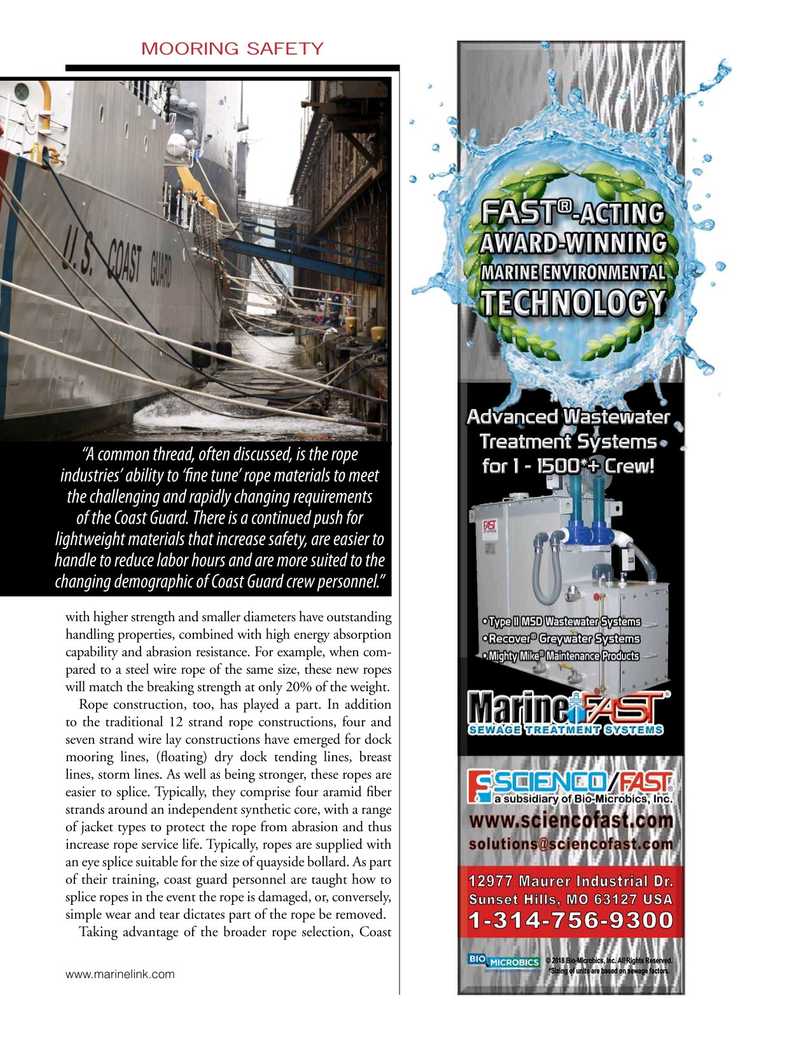
Page 33: of Marine News Magazine (February 2019)
Dredging & Marine Construction
Read this page in Pdf, Flash or Html5 edition of February 2019 Marine News Magazine
MOORING SAFETY “A common thread, often discussed, is the rope industries’ ability to ‘fne tune’ rope materials to meet the challenging and rapidly changing requirements of the Coast Guard. There is a continued push for lightweight materials that increase safety, are easier to handle to reduce labor hours and are more suited to the changing demographic of Coast Guard crew personnel.” with higher strength and smaller diameters have outstanding handling properties, combined with high energy absorption capability and abrasion resistance. For example, when com- pared to a steel wire rope of the same size, these new ropes will match the breaking strength at only 20% of the weight.
Rope construction, too, has played a part. In addition to the traditional 12 strand rope constructions, four and seven strand wire lay constructions have emerged for dock mooring lines, (foating) dry dock tending lines, breast lines, storm lines. As well as being stronger, these ropes are easier to splice. Typically, they comprise four aramid fber strands around an independent synthetic core, with a range of jacket types to protect the rope from abrasion and thus increase rope service life. Typically, ropes are supplied with an eye splice suitable for the size of quayside bollard. As part of their training, coast guard personnel are taught how to splice ropes in the event the rope is damaged, or, conversely, simple wear and tear dictates part of the rope be removed.
Taking advantage of the broader rope selection, Coast www.marinelink.com

 32
32

 34
34
